Potential New Tools for Lettuce Disease Management
Michael
E. Matheron and Martin Porchas, Yuma Agricultural Center,
University of Arizona
Fungal pathogens have the potential to bring about serious reductions in the quality and quantity of lettuce produced in Arizona. Examples include Bremia lactucae, the pathogen that causes downy mildew; Erysiphe cichoracearum, the causal agent of powdery mildew; and Sclerotinia minor and S. sclerotiorum, the pathogens responsible for leaf drop.
Fortunately, each of these fungal diseases does not cause major economic losses during every growing season. However, given favorable environmental conditions for disease development, one or more of these diseases can develop rapidly and lead to extensive crop losses. Depending upon the price of lettuce at the time of the crop loss, economic losses can be severe. Without question, successful management of these fungal pathogens is essential for realization of improved quality and maximum yield potential of lettuce in Arizona.
Current management strategies for, downy mildew, powdery mildew, and Sclerotinia leaf drop are heavily reliant upon agrochemicals. Because of increasing environmental concerns as well as potential development of tolerance to fungicides by fungal pathogens, there is no guarantee that materials currently in use will be available in the future. New and more effective, as well as environmentally compatible methods of disease management are needed. New disease management chemistries currently are being developed by several different agrochemical companies. The novel modes of action of these compounds offer the possibility of controlling the above mentioned pathogens in new and exciting ways. One new class of fungicides, called strobilurins, is derived from a fungicide produced naturally by some wood-rotting mushroom fungi. The strobilurins have a broad spectrum of activity on plant pathogenic fungi, are very low in mammalian toxicity, and have been designated “reduced risk pesticides” by EPA. Another unique product under development does nothing to fungi directly; however, when applied to plants this chemical induces systemic resistance in the plant against certain plant diseases. This material, called Actigard, induces plant resistance at very low use rates and also has been designated a “reduced risk pesticide” by EPA. Also, interest in “organic” production requires evaluation of disease control products that will meet these requirements. Finally, cultivars of lettuce may vary in their genetic susceptibility to some of these lettuce diseases, offering the possibility of cultivar selection as a disease management tool.
Comprehensive field trials were conducted last year to test the ability
of some new compounds to control powdery mildew and Sclerotinia leaf drop
of lettuce. Additionally, several cultivars of lettuce were evaluated
for their relative susceptibility to powdery mildew.
The results of these field trials, presented in the following tables, demonstrate the efficacy of several potential new products for disease management. As a pathogen resistance management strategy, alternation of materials with different modes of action is being actively studied. Our data suggest that alternation between certain chemistries can provide a level of disease control equivalent to that achieved by using one chemistry alone. Our data also show that some lettuce cultivars are more susceptible to powdery mildew than others. Since field trial results vary from year to year, these trials will be conducted again this year. Our goal is to identify disease management products and strategies that will maximize the level of disease control available to growers.
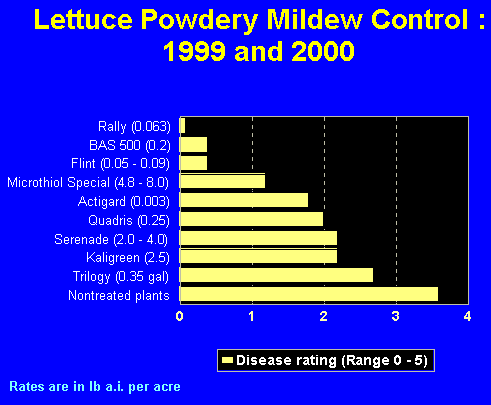
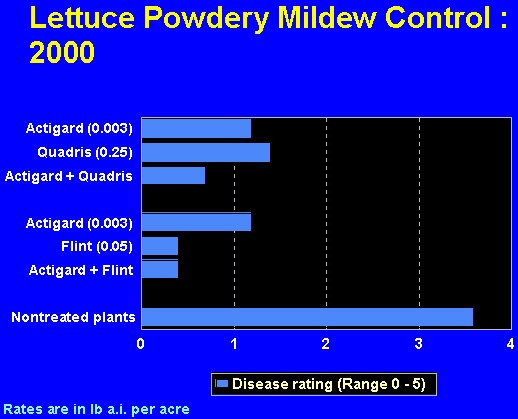
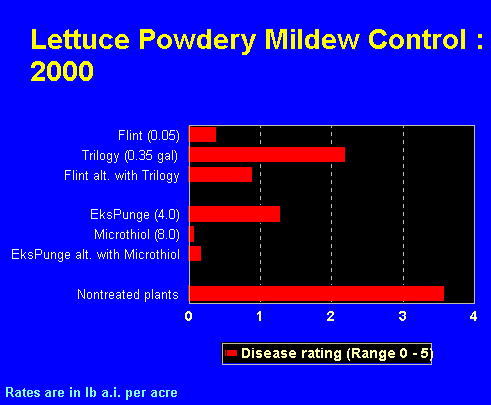
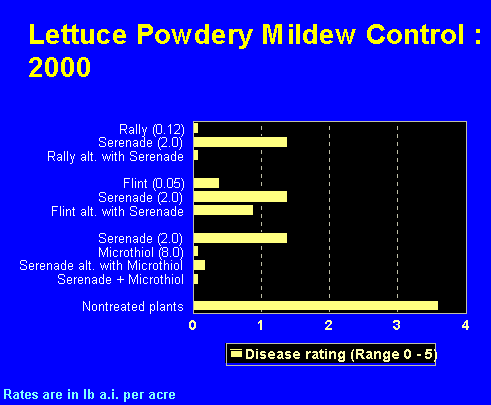
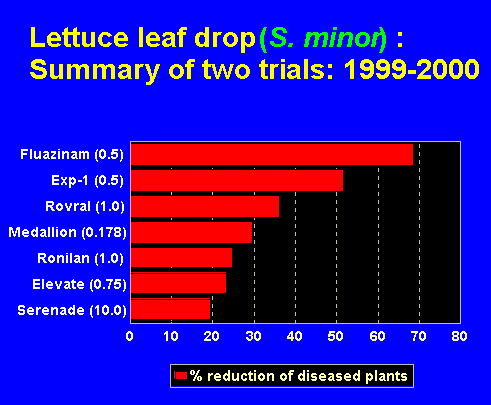
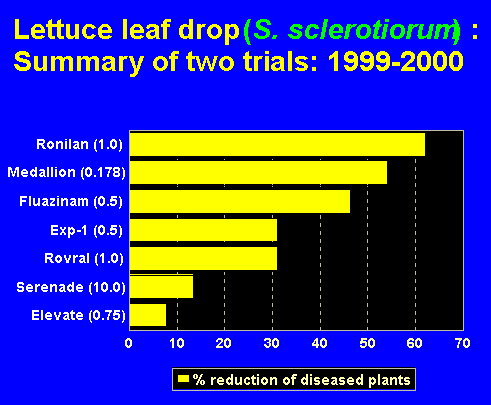
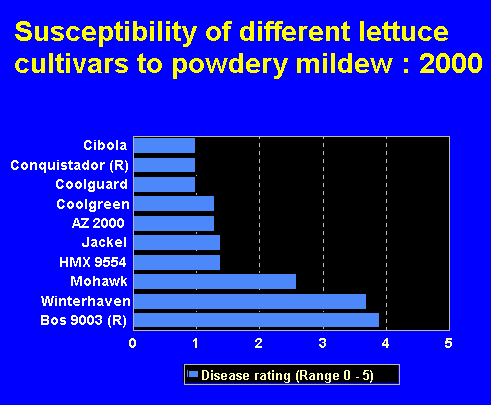
Issued in furtherance of Cooperative Extension work, acts of May 8 and June 30, 1914, in cooperation with the U.S. Department of Agriculture, James A. Christenson, Director Cooperative Extension, College of Agriculture and Life Sciences, The University of Arizona.
The University of Arizona is an equal opportunity, affirmative action institution. The University does not discriminate on the basis of race, color, religion, sex, national origin, age, disability, veteran status, or sexual orientation in its programs and activities.
Any products, services, or organizations that are
mentioned, shown, or indirectly implied in this web document do not imply
endorsement by The University of Arizona.
Information provided by:
Michael E. Matheron, matheron@ag.arizona.edu Plant Pathologist, Yuma County
University of Arizona, Tucson, Arizona.
Material written January 2001.
For more Arizona Production Ag Information:
Home | Cotton | Veggies| Forages | Grains | Citrus | Crop x Crop | Insects | Diseases| Weeds | Pesticides | News | Weather | Research | Photos | Contacts | General Info. | Site Map
document located at: http://cals.arizona.edu/crops/counties/yuma/farmnotes/fn0101lettucedis.html
Copyright © 2001 University of Arizona,
College of Agriculture and Life Sciences
Webmaster: Al Fournier (fournier@ag.arizona.edu)